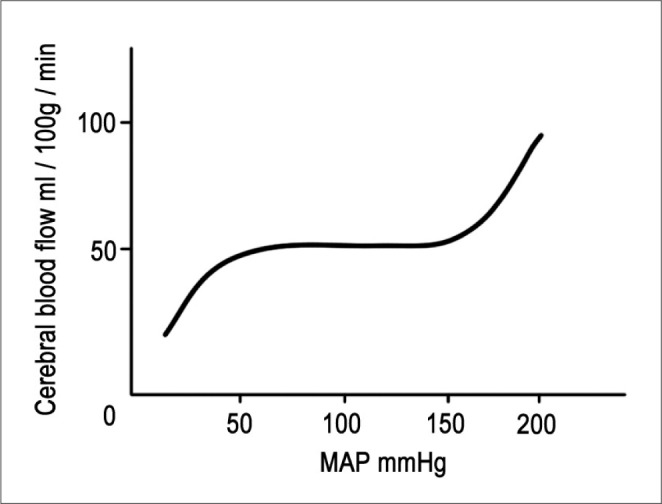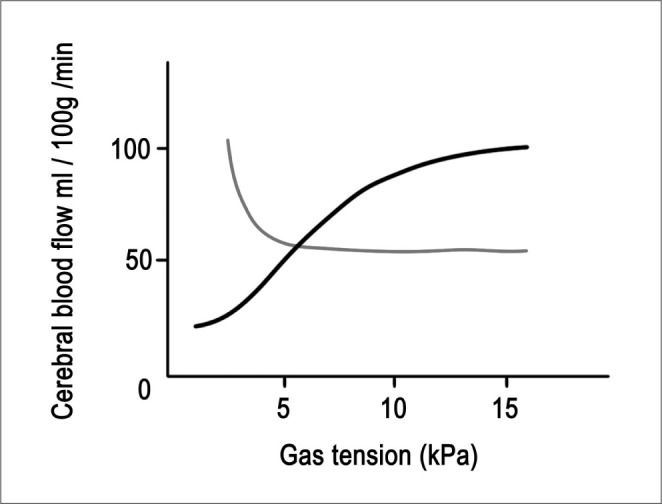Neurointervention.
2014 Sep;9(2):72-77. 10.5469/neuroint.2014.9.2.72.
Anesthetic Consideration for Neurointerventional Procedures
- Affiliations
-
- 1Department of Radiology and Research Institute of Radiology, University of Ulsan, College of Medicine, Asan Medical Center, Seoul, Korea. dcsuh@amc.seoul.kr
- 2Department of Anesthesiology and Pain Medicine, University of Ulsan, College of Medicine, Asan Medical Center, Seoul, Korea.
- KMID: 1910761
- DOI: http://doi.org/10.5469/neuroint.2014.9.2.72
Abstract
- Interventional neuroradiology (INR) has been a rapidly expanding and advancing clinical area during the past few decades. As the complexity and diversity of INR procedures increases, the demand for anesthesia also increases. Anesthesia for interventional neuroradiology is a challenge for the anesthesiologist due to the unfamiliar working environment which the anesthesiologist must consider, as well as the unique neuro-interventional components. This review provides an overview of the anesthetic options and specific consideration of the anesthesia requirements for each procedure. We also introduce the anesthetic management for interventional neuroradiology performed in our medical institution.
MeSH Terms
Figure
Cited by 1 articles
-
Feasibility, Safety, and Follow-up Angiographic Results of Endovascular Treatment for Non-Selected Ruptured Intracranial Aneurysms Under Local Anesthesia with Conscious Sedation
Jongsoo Kang, Chul-Hoo Kang, Jieun Roh, Jeong A Yeom, Dong-Hyun Shim, Young Soo Kim, Sang Won Lee, Young-Soo Kim, Kee Hong Park, Chang-Hun Kim, Soo-Kyoung Kim, Nack-Cheon Choi, Oh-Young Kwon, Heeyoung Kang, Seung Kug Baik
J Neurocrit Care. 2018;11(2):93-101. doi: 10.18700/jnc.180059.
Reference
-
1. Zhao LB, Miyachi S, Shi HB, Suh DC. Comparison of medical education and requirements for training in the interventional neuroradiology in china, Japan and Korea. Neurointervention. 2013; 8:3–8. PMID: 23515458.
Article2. Lee YM, Hwang SM, Kim EH, Lee DG, Shim JH, Suh DC. Current status of neurointerventional activities in Korea. Neurointervention. 2013; 8:65–67. PMID: 24024068.
Article3. Jeong YG, Kim EH, Hwang SM, Lee GY, Kim JW, Choi YJ, et al. Outpatient (Same-day care) Neuroangiography and Neurointervention. Neurointervention. 2012; 7:17–22. PMID: 22454780.
Article4. Schaller SJ, Fink H. Sugammadex as a reversal agent for neuromuscular block: an evidence-based review. Core Evid. 2013; 8:57–67. PMID: 24098155.5. Carmi U, Kramer MR, Zemtzov D, Rosengarten D, Fruchter O. Propofol safety in bronchoscopy: prospective randomized trial using transcutaneous carbon dioxide tension monitoring. Respiration. 2011; 82:515–521. PMID: 21934290.
Article6. Nelson DB, Barkun AN, Block KP, Burdick JS, Ginsberg GG, Greenwald DA, et al. Propofol use during gastrointestinal endoscopy. Gastrointest Endosc. 2001; 53:876–879. PMID: 11375623.
Article7. Smith AL, Wollman H. Cerebral blood flow and metabolism: effects of anesthetic drugs and techniques. Anesthesiology. 1972; 36:378–400. PMID: 4553579.8. Tietjen CS, Hurn PD, Ulatowski JA, Kirsch JR. Treatment modalities for hypertensive patients with intracranial pathology: options and risks. Crit Care Med. 1996; 24:311–322. PMID: 8605807.9. Strandgaard S, Olesen J, Skinhoj E, Lassen NA. Autoregulation of brain circulation in severe arterial hypertension. Br Med J. 1973; 1:507–510. PMID: 4692673.
Article10. Sokoloff L. Circulation and energy metabolism of the brain. Basic Neurochemistry. 1989. p. 565–566.11. Michenfelder JD. Cerebral blood flow and metabolism. Cilinical Neuroanesthesia. New York: Churchill Livingston;1990. p. 1–3.12. Pierce EC Jr, Lambertsen CJ, Deutsch S, Chase PE, Linde HW, Dripps RD, et al. Cerebral circulation and metabolism during thiopental anesthesia and hyper-ventilation in man. J Clin Invest. 1962; 41:1664–1671. PMID: 14486452.
Article13. Boarini DJ, Kassell NF, Coester HC, Butler M, Sokoll MD. Comparison of systemic and cerebrovascular effects of isoflurane and halothane. Neurosurgery. 1984; 15:400–409. PMID: 6483155.
Article14. Ginsberg B, Glass PS, Quill T, Shafron D, Ossey KD. Onset and duration of neuromuscular blockade following high-dose vecuronium administration. Anesthesiology. 1989; 71:201–205. PMID: 2569279.15. Newell DW, Eskridge J, Mayberg M, Grady MS, Lewis D, Winn HR. Endovascular treatment of intracranial aneurysms and cerebral vasospasm. Clin Neurosurg. 1992; 39:348–360. PMID: 1458749.16. Molyneux AJ, Kerr RS, Yu LM, Clarke M, Sneade M, Yarnold JA, et al. International subarachnoid aneurysm trial (ISAT) of neurosurgical clipping versus endovascular coiling in 2143 patients with ruptured intracranial aneurysms: a randomised comparison of effects on survival, dependency, seizures, rebleeding, subgroups, and aneurysm occlusion. Lancet. 2005; 366:809–817. PMID: 16139655.
Article17. Broderick JP, Brott TG, Duldner JE, Tomsick T, Leach A. Initial and recurrent bleeding are the major causes of death following subarachnoid hemorrhage. Stroke. 1994; 25:1342–1347. PMID: 8023347.
Article18. van Rooij WJ, Sluzewski M, Beute GN. Brain AVM embolization with Onyx. AJNR Am J Neuroradiol. 2007; 28:172–177. discussion 178. PMID: 17213451.19. Panagiotopoulos V, Gizewski E, Asgari S, Regel J, Forsting M, Wanke I. Embolization of intracranial arteriovenous malformations with ethylene-vinyl alcohol copolymer (Onyx). AJNR Am J Neuroradiol. 2009; 30:99–106. PMID: 18842759.
Article20. Shin SH, Kwon SC, Suh DC. Recent Update of Guidelines for Neurointerventional Procedures. Neurointervention. 2013; 8:68–72. PMID: 24024069.
Article21. Brott TG, Hobson RW 2nd, Howard G, Roubin GS, Clark WM, Brooks W, et al. Stenting versus endarterectomy for treatment of carotid-artery stenosis. N Engl J Med. 2010; 363:11–23. PMID: 20505173.
Article22. Brott TG, Halperin JL, Abbara S, Bacharach JM, Barr JD, Bush RL, et al. 2011 ASA/ACCF/AHA/AANN/AANS/ACR/ASNR/CNS/SAIP/SCAI/SIR/SNIS/SVM/SVS guideline on the management of patients with extracranial carotid and vertebral artery disease. Stroke. 2011; 42:e464–e540. PMID: 21282493.23. Suh DC, Kim JL, Kim EH, Kim JK, Shin JH, Hyun DH, et al. Carotid baroreceptor reaction after stenting in 2 locations of carotid bulb lesions of different embryologic origin. AJNR Am J Neuroradiol. 2012; 33:977–981. PMID: 22268083.
Article24. Park ST, Kim JK, Yoon KH, Park SO, Park SW, Kim JS, et al. Atherosclerotic carotid stenoses of apical versus body lesions in high-risk carotid stenting patients. AJNR Am J Neuroradiol. 2010; 31:1106–1112. PMID: 20093309.
Article25. Liu S, Jung JH, Kim SM, Lim HK, Kwon HJ, Kim JK, et al. Simultaneous bilateral carotid stenting in high-risk patients. AJNR Am J Neuroradiol. 2010; 31:1113–1117. PMID: 20053810.
Article26. van Mook WN, Rennenberg RJ, Schurink GW, van Oostenbrugge RJ, Mess WH, Hofman PA, et al. Cerebral hyperperfusion syndrome. Lancet Neurol. 2005; 4:877–888. PMID: 16297845.
Article27. Schroeder T, Sillesen H, Sorensen O, Engell HC. Cerebral hyperperfusion following carotid endarterectomy. J Neurosurg. 1987; 66:824–829. PMID: 3572512.
Article28. Sbarigia E, Speziale F, Giannoni MF, Colonna M, Panico MA, Fiorani P. Post-carotid endarterectomy hyperperfusion syndrome: preliminary observations for identifying at risk patients by transcranial Doppler sonography and the acetazolamide test. Eur J Vasc Surg. 1993; 7:252–256. PMID: 8513903.
Article29. Murphy SW, Barrett BJ, Parfrey PS. Contrast nephropathy. J Am Soc Nephrol. 2000; 11:177–182. PMID: 10616853.
Article30. Au TH, Bruckner A, Mohiuddin SM, Hilleman DE. The Prevention of Contrast-Induced Nephropathy. Ann Pharmacother. 2014.
Article31. Zagler A, Azadpour M, Mercado C, Hennekens CH. N-acetylcysteine and contrast-induced nephropathy: a meta-analysis of 13 randomized trials. Am Heart J. 2006; 151:140–145. PMID: 16368307.
Article32. Bagshaw SM, Ghali WA. Theophylline for prevention of contrast-induced nephropathy: a systematic review and meta-analysis. Arch Intern Med. 2005; 165:1087–1093. PMID: 15911721.
- Full Text Links
- Actions
-
Cited
- CITED
-
- Close
- Share
- Similar articles
-
- Use of a Balloon Catheter for Occlusion of Iatrogenic Direct Carotid-Cavernous Fistula Occurring during a Neurointerventional Procedure
- Patient Radiation Dose in Neurointerventional Radiologic Procedure: A Tertiary Care Experience
- Recent Update of Guidelines for Neurointerventional Procedures
- Anesthetic management for interventional neuroradiology
- Evaluation of Operation Schedule



